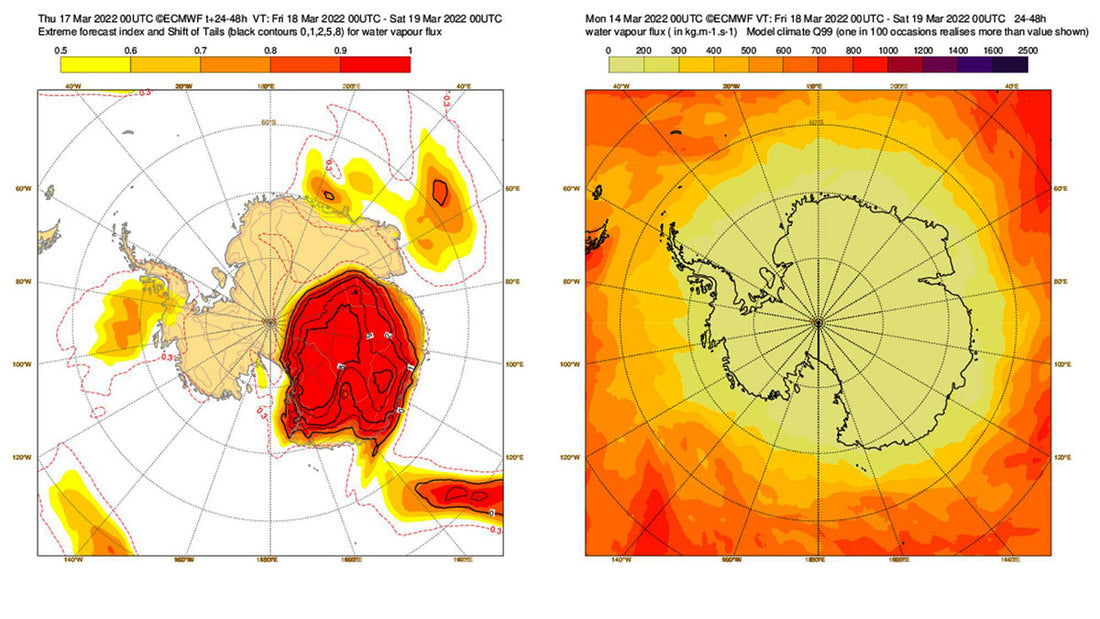
Staggering New Antarctic Heat Record “Virtually Impossible” Without Man-Made Climate Change
Share
The coldest location on the planet has experienced an episode of warm weather this week unlike any ever observed, with temperatures over the eastern Antarctic ice sheet soaring 10 to 32 degrees above normal. The warmth has smashed records and shocked scientists.
“This event is completely unprecedented and upended our expectations about the Antarctic climate system,” said Jonathan Wille, a researcher studying polar meteorology at Université Grenoble Alpes in France.
The Concordia research base at Dome C of the Antarctic, which is at an altitude of 3,000 meters on Friday registered a record -11.5°C, Etienne Kapikian, a meteorologist from France-Meteo tweeted.
Normally, temperatures fall with the end of the southern summer, but the Dumont d'Urville station on Antarctica registered record temperatures for March with 4.9°C, at a time of year when normal temperatures are already sub-zero.

“Antarctic climatology has been rewritten,” tweeted Stefano Di Battista, a researcher who has published studies on Antarctic temperatures. He added that such temperature anomalies would have been considered “impossible” and “unthinkable” before they actually occurred.
Parts of eastern Antarctica have seen temperatures hover 40°C above normal for three days and counting, Wille said. He likened the event to the June heatwave in the Pacific Northwest, which scientists concluded would have been “virtually impossible” without human-caused climate change.
Gaetan Heymes of France Meteo described the unseasonably mild weather as a "historic event". And geoscientist Jonathan Wille wrote on Twitter: "And there it is, Concordia broke its all-time record temperature by 1.5°C.”
"This is when temperatures should be rapidly falling since the summer solstice in December. This is a Pacific Northwest 2021 heatwave kind of event," he added. "Never supposed to happen."
The unprecedented temperatures come after the National Snow and Ice Data Center in the United States said Antarctica's sea ice fell below two million square kilometres in late February for the first time since 1979.

What is considered “warm” over the frozen, barren confines of eastern Antarctica is, of course, relative. Instead of temperatures being -45 or -51°C, they’ve been closer to zero or -18°C or -12°C — but that’s a massive heatwave by Antarctic standards.
The average high temperature in Vostok — at the centre of the eastern ice sheet — is around -53°C in March. But on Friday, the temperature leapt to -17.7°C, the warmest it’s been there during March since record-keeping began 65 years ago. It broke the previous monthly record by a staggering 15°C.
“In about 65 record years in Vostok, between March and October, values above -30°C were never observed,” wrote Di Battista in an email.
Vostok, a Russian meteorological observatory, is about 1300.35km from the South Pole and sits 3488m above sea level. It’s famous for holding the lowest temperature ever observed on Earth: 89.2°C, set on July 21, 1983.
Temperatures running at least 32°C above normal have expanded over vast portions of eastern Antarctica from the Adélie Coast through much of the eastern ice sheet’s interior. Some computer model simulations and observations suggest temperatures may have even climbed up to 50°C above normal in a few areas.
Eastern Antarctica’s Concordia research station, operated by France and Italy and about 350 miles from Vostok, climbed to -12.2°C, its highest temperature on record for any month of the year. Average high temperatures in March are around -48.7°C.




